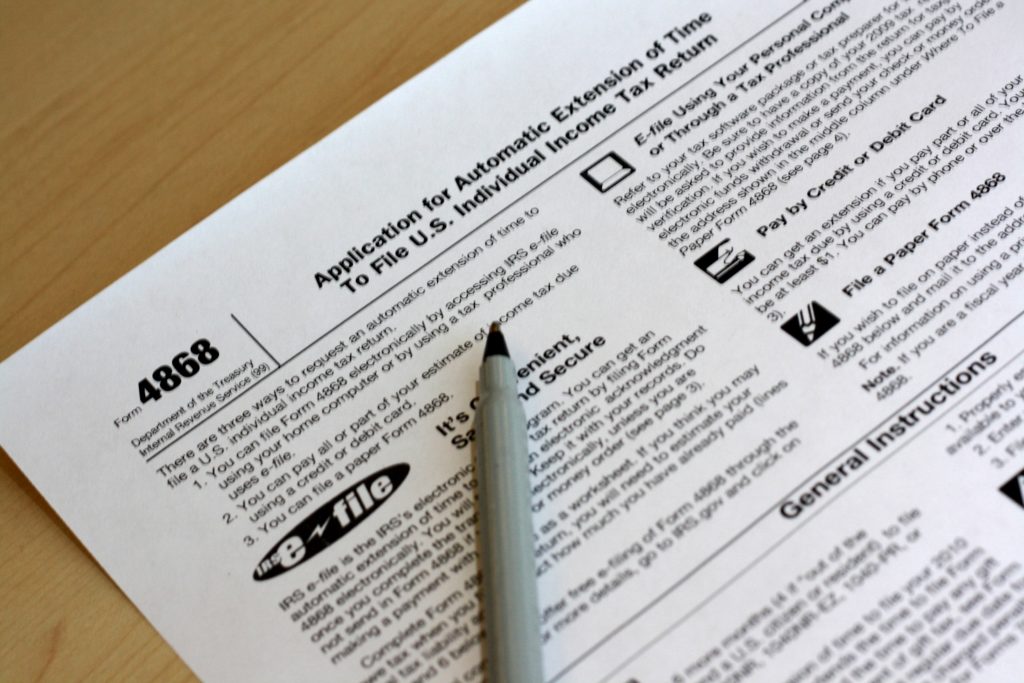Image Credit: MoneyBlogNewz on Flickr
Have you taken care of your U.S. tax filing for your business this year? Or do you plan to file for a personal tax refund with the IRS? Well, you are running of time on both counts. That’s because the U.S. tax filing deadline is April 17, 2018.
If you are not sure what to do, we have a handy guide to share with you. That’s because the nice folks at PDFelement have compiled a useful infographic to guide you.
What’s more, you can use this infographic as a step-by-step guide when you’re applying for a tax refund from the IRS. Additionally, it touches on some vital facts about the U.S. tax system. You’ll learn how the tax system works, how revenue is generated, and some interesting facts about how people use their tax refunds.
U.S. Tax Revenue Facts
The first statistic in this infographic that catches the eye is that U.S. tax revenue stood at around $3.46 trillion in 2017.
In 2013 that number was $2.78 trillion. It has been increasing steadily over the past five years and is expected to grow even further in 2018. This year’s estimated figure is approximately $3.654 trillion.
In terms of revenue sources, income taxes account for half of all revenue collected by the government. This is followed by payroll taxes at 33%, with corporate taxes coming in third at 10%. Meanwhile, custom excise taxes, the Federal Reserve’s net income, and estate taxes make up the remaining portion of the revenue stream.
Interestingly, U.S. citizens bear a significantly lower tax burden than do citizens of other developed nations, such as Canada, Japan, United Kingdom, Germany, Italy, and France. Of these six countries, French citizens have the highest tax burden, at 46% of that country’s GDP. This is followed closely by Italy at 43%, Germany at 37%, and the United Kingdom at 33%. Both Japan and Canada come in at 32% of their respective GDP’s, while the U.S. stands at 26%.
RELATED ARTICLE: PAYING YOUR FAIR SHARE: A BRIEF GUIDE TO PAYING TAXES AS A FREELANCER
How to Do Tax Filing for a Refund with the IRS
The infographic linked earlier in this post also comes with a practical tax filing guide that you can use when you’re applying for a tax refund. This can be especially helpful for anyone who’s new to tax filing fundamentals.
Basically, filing for a refund entails 11 steps:
- Confirm if you qualify for a refund
- Gather tax forms and paperwork
- Determine your filing status
- See if you qualify for free tax return preparation
- Choose the simplest form
- Figure taxes and credits
- Claim dependents and exemptions
- Determine if you need to pay quarterly estimated taxes
- Determine if you need tax professionals
- File your taxes online
- Check your return status
What Americans Do with Their Refunds
Americans are most likely to use their tax refunds for savings and paying down debts, at least if statistics from previous years hold true. Research shows that 41% use tax refunds to clear debts. Another 38% save tax refunds for the future. Others make major purchases. For example, some purchase homes or make other large purchases, while others spend their money on vacations or splurge on luxury items.
Click the Link to Learn More
If you want to learn more, take a look at the interesting infographic we referenced above. You’ll find many more captivating facts about U.S. income tax and the U.S. tax filing deadlines you need to know about.

